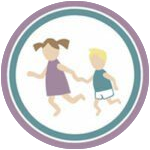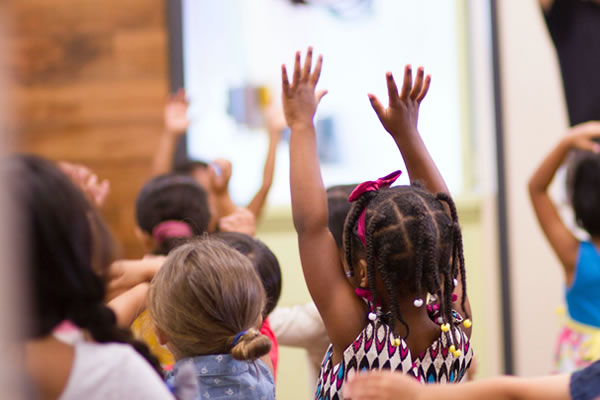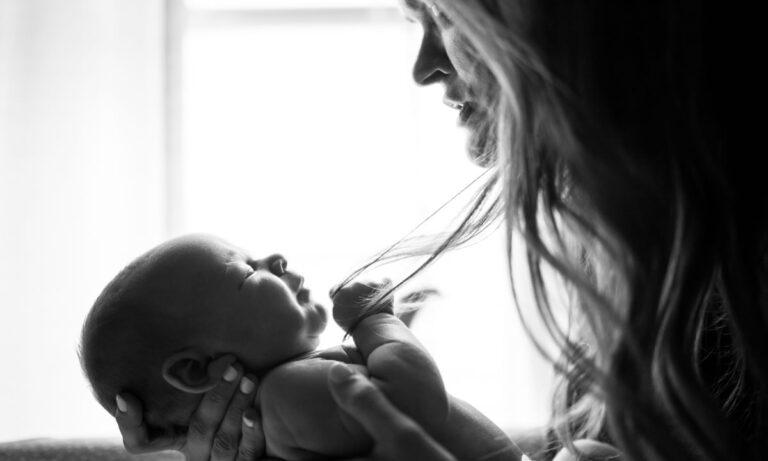For over twenty years now I have been teaching parents how to connect, validate and understand the needs behind children’s emotional expressions, and allow them to feel and express themselves fully. Yet I noticed new difficult behaviors and dependencies arising as a result of these well-intended endeavors. Indeed, some of the kindest parents unintentionally teach their children to feel more entitled and therefore less peaceful.
Many of us grew up emotionally lonely and confused by habitual denial of our feelings. We were told, “Don’t cry, nothing happened,” while inside we felt that a lot happened; or we were shut down with, “You are fine,” when we were hurting inside. It is inspiring to see many of today’s parents trying to give their children the compassion and validation they themselves did not receive. However, in their anxiety to be gentle, parents sometimes don’t realize that they teach victimhood and neediness. They typically call for my guidance saying: “I have been so kind and responsive, why is my child so demanding, whiny, angry, and even aggressive?”
How validation and talking about feelings and needs can backfire?
Depending on how we speak, the child can turn validation into seeing herself as a victim; “If my feeling is so right and my need so real, then it is horrible that I am not getting what I want.” The relief of knowing, “Mommy understands how miserable I am,” can turn into, “I am right to be miserable so I must get what I want.” The child then feels entitled and angry and is likely to hit and scream.
Dwelling on emotions can recreate them and make the child a believer in her own drama. When we “drown” in the story, we lead the child to devote more tantrums to defend similar scenarios again and again. The question is how to validate the child’s emotional experience without drowning with her. We want to encourage her to express herself freely with our attentive and caring listening; we don’t want to pump emotions that weren’t authentically hers. While connecting kindly, we must simultaneously open the door for her to feel resilient and able to move on with inner peace.
The source of pain is not what happens, but what the child says to herself about what happens, which she learns from us. Therefore, it is about doing our own work side by side with the child, learning to discover how our mind takes us for a ride and not pass this painful ride to the child. We don’t want to deny emotions, nor do we need to be unkind or controlling, but we do want to empower the child to discover the joy and even gratitude in what is unchangeable.
Empowering through inquiry
When we think of empowering we may think of making an inspiring suggestion or comment. However, most often, empowering is about saying less, not more. It is about knowing not to fix the situation or even imply a need for fixing. Unless you are unnecessarily restricting your child or the situation is unsafe, avoid changing reality. Your child takes cues from your attitude. Drama and panic to fix will scare and weaken him.
For example, a three-year-old was crying when her banana broke. Her mother validated her feeling of “sadness and disappointment” at which point the child got so mad that she wouldn’t listen to anything other than going to the store to buy another banana. The validation and recognition of her wish worked all too well and she was now convinced that she had no emotional capacity to do without a whole new banana. At this point, the feeling is no longer the child’s original authentic experience, but an expanded version her mother has unintentionally ignited in her.
Rather than name strong emotions like sadness or disappointment, a parent can confirm the facts, “You wanted a whole banana and now you have two parts.” With such factual recognition, the child feels connected and understood while free to generate her own emotional response. If the child has not learned to dramatize and feel victimized, then such validation will bring the issue to an end. You can add, “Let me know if you don’t want it and I will put it away.”
If the child needs to cry after your factual validation, be there for her without drama and without a “communication workshop.” Just hold the space, offer to hold her, or simply listen and be a loving presence. She will be done raging and ready to move on when you allow her to express herself fully. Usually, with a young one, she moves on at ease as long as we don’t inject hope or anxiety by distracting, offering solutions, compensating, or hoping that validation will stop the crying (which is not its purpose).
Some children are rightfully uncomfortable when a parent “reads” their emotions out loud. Such a child not only cannot feel connected at that moment but tends to be angry or feel shame. Validation of facts can therefore be also more respectful and allow space for autonomous expression if needed. Most often, when we are at peace, the child moves on with ease.
If not used to getting some payoff for aggression or rage, most children don’t need anything other than factual validation and parental presence. If the child needs more help in feeling, expressing, and being empowered, one can do a simple inquiry, adopted from The Work of Byron Katie:
1) Recognize the likely thought that causes the upset and speak it:
(We will use the broken banana example but you can apply it to any cause of the upset.)
Mother: “Are you imagining the banana whole and saying to yourself that it should still be whole?”
Child: “Yes.”
2) Investigating the truth:
Mother: “Are you sure this banana should be whole?”
Child: Typically laughing and saying, “No,” then eating the banana. Or, quietly pondering, looking at the two-part banana (or toy or scraped knee).
But let’s take the more habituated case and imagine the child says: “Yes, I want it whole,” raging even more:
3) Exploring the impact the thought has on the child’s emotions and reactions:
Mother: “What happens to you when you keep imagining a whole banana and this one is two parts?”
The child is crying or saying, “I want that other banana… I want you to go get another…” (That’s her painful reaction to her own imagination, not to reality).
Here comes more validation, but this time, it is about the thought, not about reality:
Mother: “I see. When you think of a whole banana – then you want it, you feel upset and you cry. It is fine to cry. Would you like me to hold you?”
The message is clear that feelings are totally fine to experience and express. The child may cry more, and gets a hug, connection and love for as long as she needs. She learns, “I cry because of what I think. I am not a victim of the banana or whatever the story is.” She doesn’t get it consciously on the spot, but over the years this distinction will give her emotional resilience and become her way of responding.
4) Investigate how the child would feel if she didn’t have that thought:
Mother: “How would you feel about this two pieces banana if you weren’t imagining the other one?”
Child: Eats the banana, throws it laughing, brings a book to read or whatever is closure for her. In essence, she is saying, “I would be fine.”
If the child is strongly habituated to getting her way, this process may have to continue. Yet, when we stay peaceful and not anxious to fix or to stop her tears, a child will come to her own inner strength and turn her painful thinking around on her own in action and/or words by eating the banana, saying “I don’t need another banana” or moving on.
For most children, the parent’s calm factual validation is enough. When we don’t “drown” with the child, she becomes aware of the solid ground on which we are standing and steps out of her emotional “water” to join us, in her own time and way.
Empowering through benign recognition:
I recall, in one of the family intensive workshops in our home, the children of both families were having a ball in the bedroom jumping on the bed and laughing while the mother was having a session with me in the kitchen. Every now and then we heard screaming. Suddenly the door opened and out came one of my children, four at the time.
He walked over to me: “I disturbed,” he started softly, “they said that if I disturb five times I will have to leave the room.”
I opened my arms and he climbed into my lap.
“I disturbed five times,” he continued.
I kissed and hugged him. I said, “You wanted to stay and play but you couldn’t help yourself?” He nodded. “I know how hard it can be to control yourself.” I empathized.
“I know,” he said.
I hugged and kissed him again. After giving him more empathy he became quiet and I said, “Sitting together, I feel so connected to you… happy to be with you… I love everything about the way you are.”
“Even when I disturb?” He asked,
“Yes,” I responded with a smile. “I love you because you are you.”
He looked at me and said, “Ah.”
He stayed with me for a short while drinking my unconditional appreciation and love. Then he got up, went to the playroom, and got busy playing by himself, completely peaceful and content.
Some parents would wonder if by treating a child so lovingly after he “misbehaved” I don’t “reinforce” the “bad” behavior. However, there is no “bad” behavior in the child, only in our judgmental thoughts. With our recognition of the child’s humanity, he learns compassion and forgiveness.
Notice there is no mini-lecture, no “courthouse” style admonition like, “Are you learning something?” No trying to rescue the child by getting the children to take him back if he promises to behave well. No undermining the kind leadership of the older brother either. No one learns that they are a victim or that they need to change reality and no one is bad, only human.
The child felt complete and empowered to love reality as it was, love himself with his current abilities and weaknesses, forgive himself and peacefully move on. Without any painful parental preaching, he learned that disturbing doesn’t benefit him. Validation of facts and limitations without big emotional drama helped him come to terms with reality. He also learned that his worth is not harmed by his fallibility. At the same time, his brother, who compassionately gave him plenty of opportunities to stay, felt respected and empowered in his leadership role.
A child’s peaceful acceptance of reality is much more powerful than a dependency on getting things changed. He learns that he can experience intense emotions and express himself fully and that he doesn’t have to get his way to be happy. We can’t stop the rain so we are at peace with it. In the same way, children see life as what it is until we teach them otherwise. It is the love of reality that is the source of true inner peace.
©Copyright Naomi Aldort










